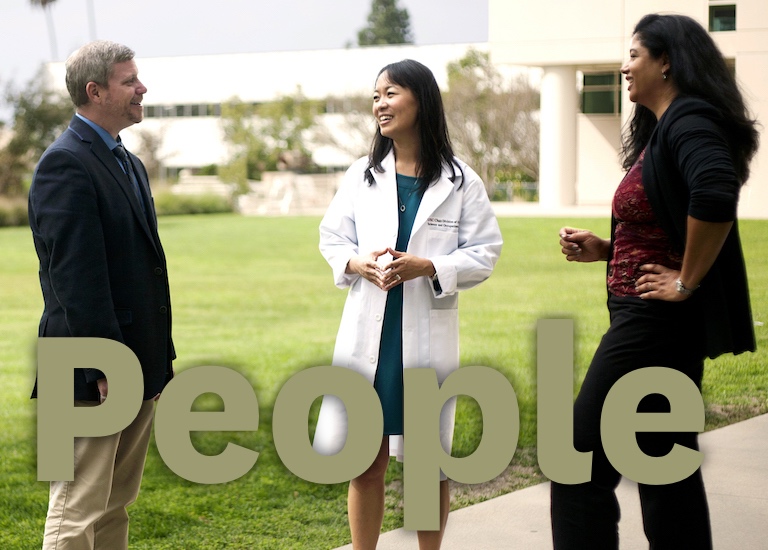Student Blog
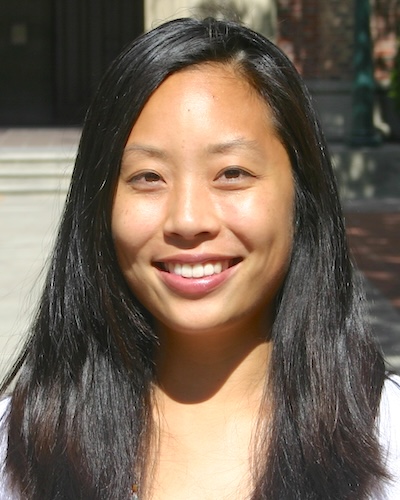
M.I. ⟩
February 15, 2011, by Yao
Classes School/Life Balance What are OS/OT?
A great opportunity and a blessing in disguise.
I just finished my first session and am about to start working on the homework for my second session of Motivational Interviewing. Motivational Interviewing is an elective class that is offered the spring semester over three Saturdays with days starting at 9am and scheduled to end around 4pm. I originally elected to take the class not only because one of my favorite professors was teaching it but also because it was a method that I planned to use in my research project. I went into class that first Saturday with the mindset of just learning a clinical skill and perfecting and perfecting until I felt that I had it right. Boy did I have the wrong idea!
The day started off with the basics and the history behind motivational interviewing and some video examples of practitioners incorporating it into practice. Then it came time to practice. Like I had mentioned before it was not a skill that should just be learned cold and practiced numerous times, rather it’s a skill that you need to feel and experience. This feeling and experience will guide your use of the skill, a real feeling and investment in the person that you’re talking to. To me it’s not a skill that you can just practice with a partner and in the middle ask if you’re doing it right, but something that when given the opportunity should be used to help fully understand the origin of certain actions and feelings. And as my professor mentioned, “If you do it well, people won’t even know it”; not to echo what I mentioned in my previous entry but sometimes listening can bring about more answers and chances for change than automatically trying to fix the problem as soon as you hear one.
On another note this motivational interviewing class has allowed me to tap into my emotions for the first time in about a year and a half. When things happened over these past two years that required emotional investment I tended to push them aside because there was that ever present need to do well in school and live in the moment with school and my social life here in Los Angeles. I was surprised at how I felt, not to say that there was a huge revelation and that I was denying my feelings these past two years. But I was able to identify emotions and feelings that I thought I have overcome or had just died down over the past years. I’m looking forward to the second session to further explore these feelings and try and resolve them instead of just pushing them aside and making school the excuse for not addressing them. It’s a nice complement to the other coursework this semester. It also is a reminder that no matter what is going on you have to consider taking care of yourself so you can provide your best care to others.
⋯
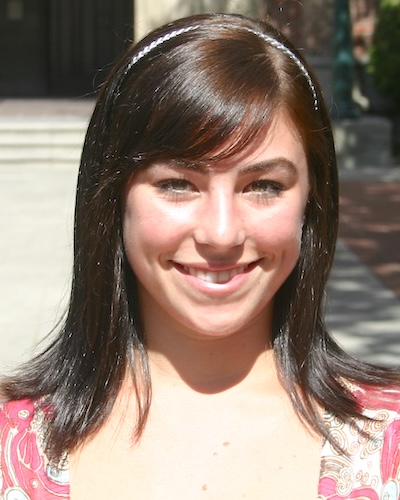
Finished a half marathon! ⟩
February 6, 2011, by Austen
This morning my OT friends Jen, Lauren, and I ran the Surf City Huntington Beach Half Marathon! A good number of first and second year OT MA students ran in the race, and it was great to see some familiar faces down there.
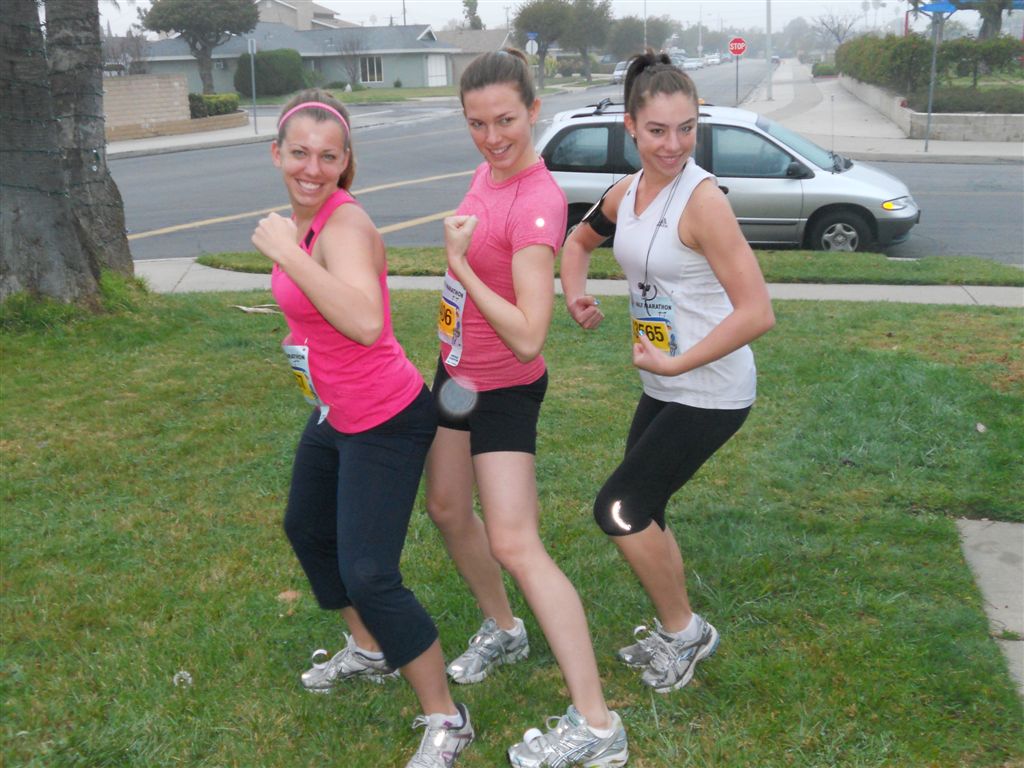
I typically run 3-4 miles a day, at about a 9:30-10 minute per mile pace. The farthest I have ever gone is 6 miles. But at the beginning of this year, Jen encouraged me to start building on some more distance. Little did I know, the Surf City Half Marathon was on her radar. She told me and Lauren to register and do it with her, so that is what we did! I have never run in a race before, but always wanted to someday. I guess I did not realize that day was coming so soon.
I started training over winter break. I would do 4 short runs, about 4-5 miles, a week, then one long run (7 or 8 miles) on a weekend morning. Once we got back to school, Jen and I ran an 8.5 miler together. That was the longest I had gone, and farthest I would go before race day.
So after Motivation Interviewing on Saturday, Jen and I drove down to Huntington Beach and stayed at Lauren’s parents’ house for the night. We loaded up on carbs (spaghetti and garlic bread) and had big bowls of oatmeal for breakfast. We certainly were energized! At 8:12am, we were off, starting the 13.1 mile adventure. Jen and Lauren bolted out, weaving through the slower runners. I decided I could not do that and wanted to keep an even pace. So I stayed behind maintaining my comfortable pace. Mile 5 I was feeling good. Lauren’s parents were on the sideline cheering us on there. But by mile 7 I was seriously doubting why I chose to do this. When the mile 10 marker showed up, I was feeling great again, on that runner’s high. Only 3 to go, and they flew by! I ran all 13.1 miles in 2 hours 8 minutes 52 seconds, with a pretty steady pace of 9:50 minute miles. I beat my goal of 2 hours 10 minutes!
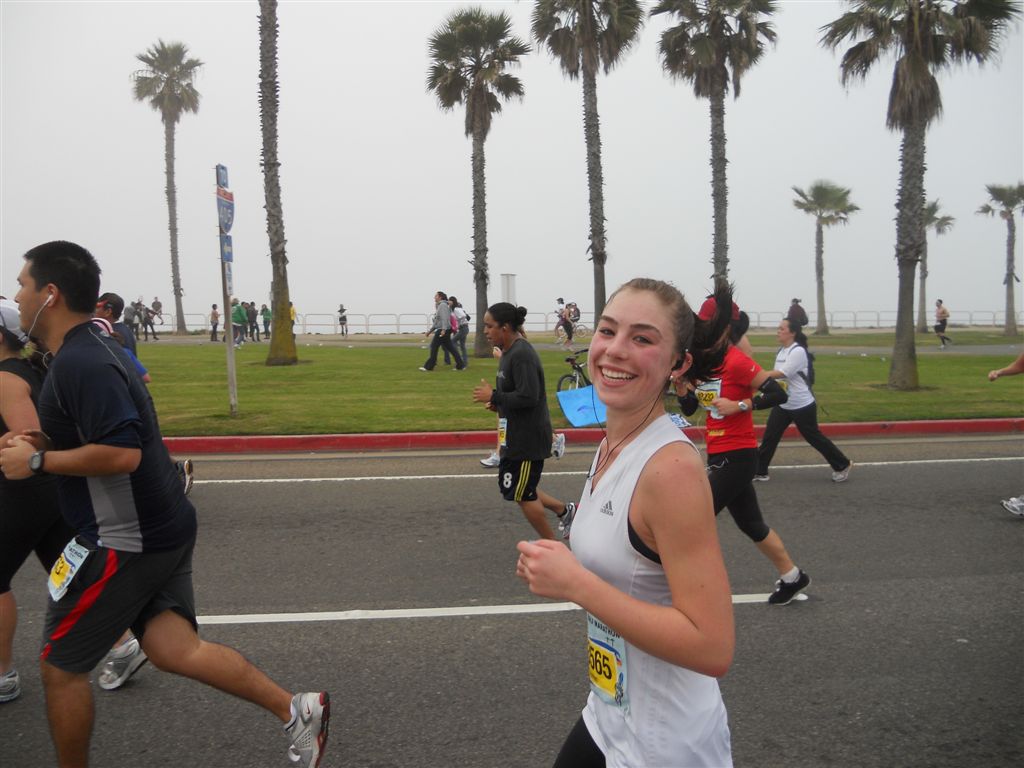
I never really understood why people run marathons. But now I do. It was a great feeling running alongside thousands of other people who enjoy doing the same thing you do. The other runners kept me going, they kept me energized, they kept me strong. Even though I was separated from my running buddies, I had lots of other runners to keep me company. There is also quite a bit of an adrenaline rush, especially when all the friends and families are yelling on the side line down the entire route. What a rush! It was just a great experience overall. I think I will do one again someday.
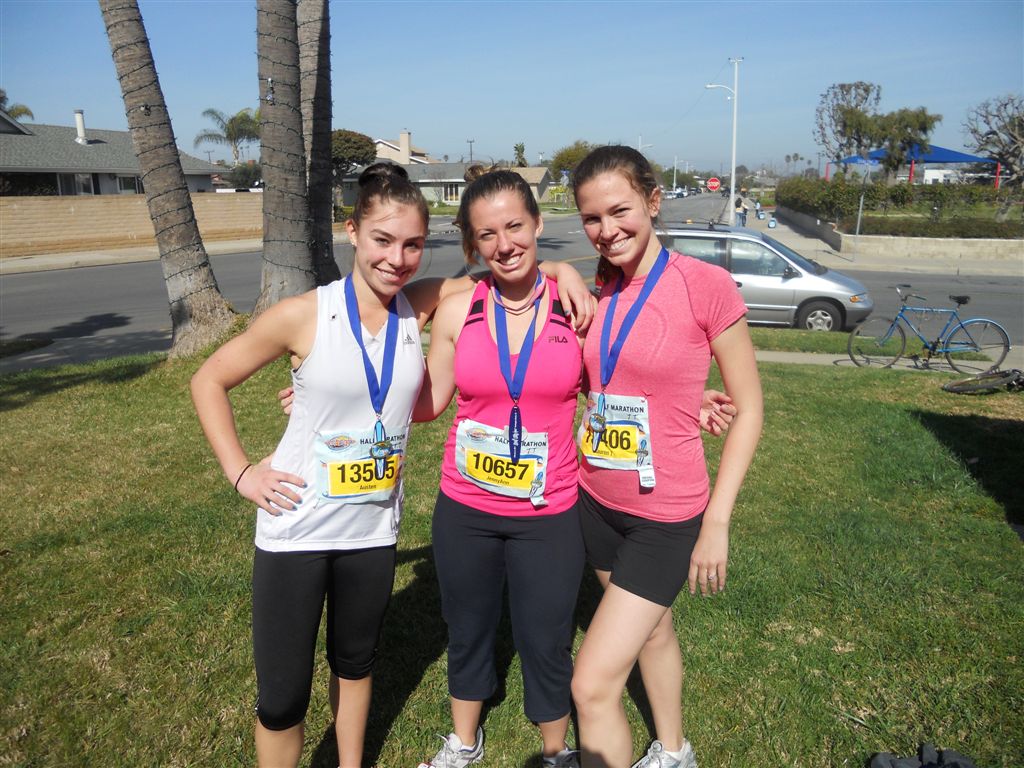
⋯
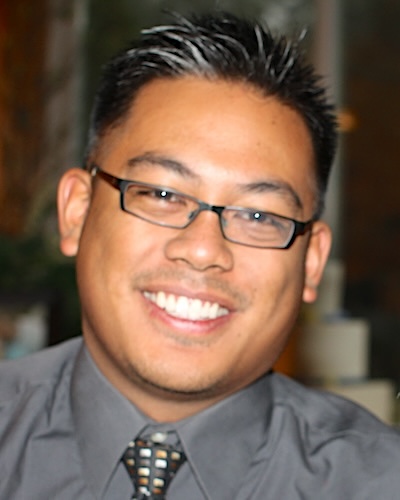
Life and the meaning it holds ⟩
January 31, 2011, by Pierre
Everyday we go through our daily routines. Some of us wake up, take a shower, get dressed, eat breakfast, and go to work. For others they may be getting ready for school, volunteering, homemaking, or sleeping in. We take for granted the many objects we use due to the consistent routines and habits we have.
For some, a walking cane can mean dependence on others or independence and empowerment. What about a car? This object could mean either losing out on going to a party or getting to a job site. Sometimes a pet can unintentionally influence our ability to go outside and take a walk. How we dress can impact our self image and social life. What we construct or accomplish with our hands can build one’s self confidence. Being able to use a stove to cook a healthy meal for your family can impact ones health and wellness.
All these objects are instrumental things that can help us accomplish our daily activities and occupations. We sometimes don’t realize how important they can be and how meaningful they are until we have lost the ability to access or use them. OTs take into account the many unique aspects of occupation and find the meaningful instruments within our routines to live satisfying lives with whatever situation one is in. It’s important to see the uniqueness of each person’s occupation and identify those things that have and instrumental influence on them.
⋯
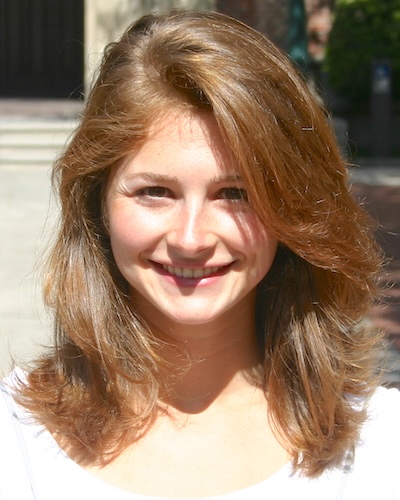
Supporting Coursework ⟩
January 31, 2011, by Amanda
To complement the clinical coursework, there are a few classes that enhance your ability to understand client needs and address them from an occupational science perspective.
Throughout the clinical coursework, there is supporting coursework to enhance your understanding of occupation and multiple dimensions of practice. To begin, there is a medical lecture component to your coursework, the purpose of which is to introduce students to varying diagnoses and conditions. Guest lecturers that specialize in working with various populations are the ones delivering the course content. The information from this course serves as a great reference. As an entry-level practitioner you are faced with so many new populations and your notes from school are something you will return to refresh your understanding and knowledge of the details of the conditions you see in practice. What I also found fascinating was when a professional from another discipline presented his or her perspective of a diagnosis. For example, there was a bariatric surgeon presented on obesity. From his professional perspective, bariatric surgery was the answer to the obesity and type II diabetes epidemic. This compares with the occupational science and therapy perspective that would intervene through understanding an individual’s occupational habits, roles, and routines and develop strategies to address the chronic weight management issues that the individual faces. Both interventions require major lifestyle changes, depending on the individual, one, the other, or both interventions may be appropriate. From these lectures, you begin to build your sense of how OT would approach a condition compared to another professional. You see how important the OT perspective is in healthcare.
Occupational science is an academic discipline devoted to the systematic study of the form, function and meaning of occupation. USC’s Division of Occupational Science and Occupational Therapy is committed to understanding the human experience of occupation in order to apply that understanding to the practice of occupational therapy. Coursework in occupational science is part of the curriculum for occupational therapy students at USC. Students explore the various dimensions and interdisciplinary knowledge that underlie occupation. Topics include how routines, habits, culture, environment and preferences contribute to health and well-being. Guest lecturers present how they have taken concepts from occupational science and developed programs that increase well-being, such as in the programs at the USC Faculty practice and in the Well-Elderly Study. As a student, you begin to see occupation through different lenses and how to identify supports and barriers to occupation. The study of occupational science informs occupational therapy practice through asking how we may best understand and enable occupational performance.
The Skills for Occupational Therapy coursework that I previously wrote about in a blog post continues in the subsequent semesters. You expand your knowledge from analyzing tasks to understanding the therapeutic relationship and how to design occupation-centered programs. I found that these classes gave a space for discussing the tough issues you may see in practice. We explored our strengths and weaknesses in terms of building relationships and how we may best serve clients therapeutically. As a therapist you are not only providing an intervention, but you are using the relationship with the client to see successful outcomes. We also had the time to discuss what we were seeing in our level I fieldworks: what we liked and what we didn’t like. Based on what I saw in fieldworks and from discussions in this class, I began to imagine how I want to be as a therapist in the future. Skills for Occupational Therapy also allows students to explore interests in program development. We had a semester-long project aimed at founding the skills for surveying a population’s needs, designing an evidence-based program, and how you would go about implementing that program. Although not required, some students realize their occupation-based program or continue on to the OTD program to run their program. Topics for this project varied from addressing returning veterans needs to the use of pets in therapy to educating other professionals about effective “sensory strategies” in pediatric settings. Medical lectures, occupational science and skills for occupational therapy all enhance one’s ability to understand client needs and how to address them in occupational therapy practice.
⋯

Experiencing a new area of practice ⟩
January 30, 2011, by Austen
There are several OT practice areas I still have yet to experience. These include school-based pediatrics, mental health, and geriatrics. One great thing about the USC OT program is there is an option to do an independent study course in the second year as an elective. You can design your own objectives and choose a setting of interest. Since I have always wondered about school-based pediatrics, I chose to do an independent study in a school setting to get an idea of what occupational therapy looks like there. I created the objectives I wanted to complete and found a school-based occupational therapist to observe for 4 hours a week.
Now, every Thursday morning I head down to Grand View Elementary in Manhattan Beach. The first day I set foot on the beautiful school campus I fell in love with it! It is a large elementary school, with lots of buildings, gardens, walkways, playgrounds, and grassy areas. There are 3 small rooms set aside for speech therapy, physical therapy, and occupational therapy. The OT room has a mat, swing, squeeze machine, games, arts and crafts materials, toys, a computer, and table and chairs. It has the full setup with plenty of resources. I was really impressed!
The occupational therapist I am observing is also amazing. She has so much energy, treats the students as equals, radiates a positive attitude, and is a great teacher. She strives to make OT fun for the kids, occupation based, and relevant to their participation in school activities. I really like the interventions used in school based therapy, including activities that help improve fine motor skills, bilateral coordination, attention, etc.
The other thing I found I really like about school based OT is the environment is really fun. The kids are social and happy, they are around their peers, and there are a lot of other professionals (teachers, administrators, instructors, etc) to consult with. It is a very supportive environment for both the children and the school staff, making it an enjoyable place to be in. I can definitely see myself working in school based OT. I am aware of the downsides, such as large case loads, limited therapy time, and traveling between schools. But I find the job’s perks to outweigh the disadvantages. Maybe I have found a new aspiration?
⋯





